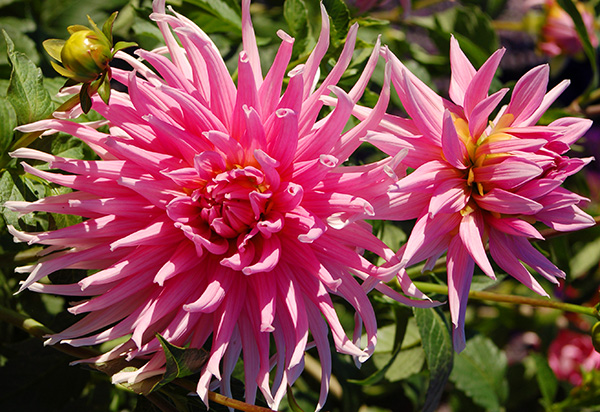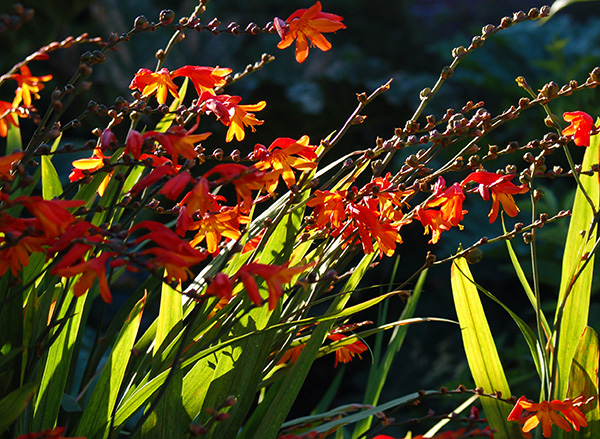Glorious flowering bulbs of summer can light up your garden all through the warm summer months. Some, like tuberous begonias and dahlias, bloom all summer long. Others, like gladiolus, cannas, and crocosmia, have a more definite and shorter season of bloom. All are among the most flamboyant of summer flowers.
They come in a brilliant rainbow of colors, many provide much needed height, and all add interesting texture and form to your garden. Oddly, though all those mentioned above are called bulbs, none has a true bulb. Instead of real bulbs they have a variety of underground storage structures like corms, tubers, or tuberous roots.
If you live in a cold winter climate, you need to dig up most of your summer flowering bulbs in autumn before hard freezes occur. Unlike spring blooming bulbs such as tulips, daffodils and crocus, these summer blooming bulbs are tender and will be killed by winter cold. You should dig up tender summer flowering bulbs in the autumn before hard freezes occur. Then you divide them, store them through the winter somewhere where they won’t freeze, and re-plant them in the spring. Garden jargon calls this process “lifting” the bulbs.
Dig them up, shake off as much of the soil as you can, and set them on newspaper in cardboard boxes to dry for a time. When the little bit of soil clinging to them has dried out, brush away the soil and store them in labeled paper bags until time to plant again next spring.
A couple of tips for success:
First, never store bulbs in plastic bags. Plastic bags don’t breathe, and they trap humidity. Both conditions promote bulb diseases. Put them in paper bags.
Second, dust them with sulfur after you’ve cleaned them up and before storing them. A good way to get them dusted is to put them in a zip-top plastic bag (only temporarily!), add a tablespoon of dusting sulfur, close the bag tightly, and shake. You should wear a face mask to avoid breathing the sulfur dust into your lungs and you should wear gloves to avoid getting it on your skin. Sulfur is a mineral element, mined from the earth, and is routinely used in organic gardening practices to control fungus disease. It is a relatively safe product but some people can have allergic reactions.
When your bulbs are well coated with sulfur, put them into a paper bag, label the bag with the kind of bulb, the name of the cultivar, and the date, and store your summer flowering bulbs in a cool, dark place through the winter until you can plant again in the spring. Dusting with sulfur prevents fungus spores from germinating as bulbs in storage can easily become infected with blue bulb mold, a fungus disease.
If, in spite of your best efforts, some of your bulbs become moldy while in storage, throw them away. Don’t plant them. And don’t keep them near your other bulbs. You’ve heard how one rotten apple can spoil the whole barrel. Same goes for bulbs. You don’t want one rotten bulb to spoil all the rest.




I must say that by and large I am really pleased with this website. After reading your post I can tell you are well informed about your writing. Looking forward to future posts.Cheers!